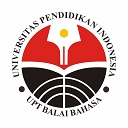Speech Act Realization on Handbook Mitigation Disaster in Japan
Abstract
This study investigates speech act strategies used in earthquake mitigation handbooks in Japan, and focuses on finding the type of communicative functions of the speech act strategies used. The government of Japan has provided online and printed handbooks for the people, to reduce risks to a minimum level regarding the disaster so people can prepare beforehand. The data in this study were collected from online leaflet and handbook regarding earthquake mitigation provided by 9 government city’s websites, the Ministry of Foreign Affairs of Japan, and by collecting actual handbook and leaflets from Indonesian lives in Japan. The data were analysed using descriptive qualitative method. Collected data then categorized into assertive and directive speech acts, negative and positive politeness based on Brown and Levinson’s politeness theory, and focusing on expression of consideration (hairyo hyougen). This study found that there are 659 statements related to earthquake disaster mitigation collected from the data. Also, the findings showed that there are 179 assertive and 480 directives speech acts, with more of imperative directive speech than prohibition directive speech. Moreover, Japanese government tend to use hairyou hyougen on their leaflet and handbook disaster mitigation to show respect to the reader.
Keywords
Full Text:
PDF (ENG)References
Brown, P. & Levinson, S.C. (1987). Politeness Some Universals in Language Usage. New York: Cambridge University Press.
Grice, H. P. (1989). Studies in the Way of Words. Cambridge, MA: Harvard University Press.
Law of The Republic of Indonesia Number 24 of 2007 Concerning Disaster Management.
Leech, G. (1993). Prinsip-prinsip pragmatik. (M.D.D. Oka, Trans.). Jakarta: Universitas Indonesia Press.
Pen, F. (2005). Nihongo no “Hairyo Hyougen” ni Kansuru Kenkyuu –Chuugokugo to no Hikaku Kenkyuu ni Okeru Shomondai -. Tokyo: Izumi Shoin.
Pratiwi, N. M. S., Kristianto, Y., & Carniasih, N. P. S. E. (2019). The directive illocutionary acts in imperative sentences on the tourism attraction brochures. Litera: Jurnal Litera Bahasa Dan Sastra, 4(1), 13-21. Retrieved from https://jurnal.undhirabali.ac.id/index.php/litera/article/download/592/519
Radhia, E. (2013). Strategi menyampaikan keinginan dalam bahasa Jepang: Kajian hairyo hyougen. Jurnal Arbiter, 1(1), 75-87. https://doi.org/10.25077/ar.1.1.75-87.2013
Riyadi, S. (2019). Jenis tindak tutur ilokusi dan implikaturnya dalam banner calon legislatif pemilu 2019. Literasi: Jurnal Penelitian, Pendidikan Bahasa, dan Sastra, 2(02), 29-42. Retrieved from http://jkqh.uniqhba.ac.id/index.php/literasi/article/download/90/50/
Searle, J. R. (2005). Expression and Meaning; Studies in The Theory of Speech Acts. Cambridge: Cambridge University Press.
Windiatmoko, D. U. (2018). Kajian pragmatik pada banner “Pitik cilik: beli dada gratis paha”. Proceeding of SNP2M (Seminar Nasional Penelitian dan Pengabdian Masyarakat) UNIM (pp. 182-186). Mojokerto: Universitas Islam Majapahit.
DOI: https://doi.org/10.17509/japanedu.v5i1.24096
Refbacks
- There are currently no refbacks.
Copyright (c) 2020 JAPANEDU: Jurnal Pendidikan dan Pengajaran Bahasa Jepang

This work is licensed under a Creative Commons Attribution-ShareAlike 4.0 International License.
 Published by:
Published by: Department of Japanese Language Education, Faculty of Language and Literature Education
Universitas Pendidikan Indonesia
 Online ISSN: Online ISSN:2528-5548 |

JAPANEDU: Jurnal Pendidikan dan Pengajaran Bahasa Jepang (e-ISSN:2528-5548) lisenced under a Creative Commons Attribution-ShareAlike 4.0 Internasional (CC BY-SA 4.0)


